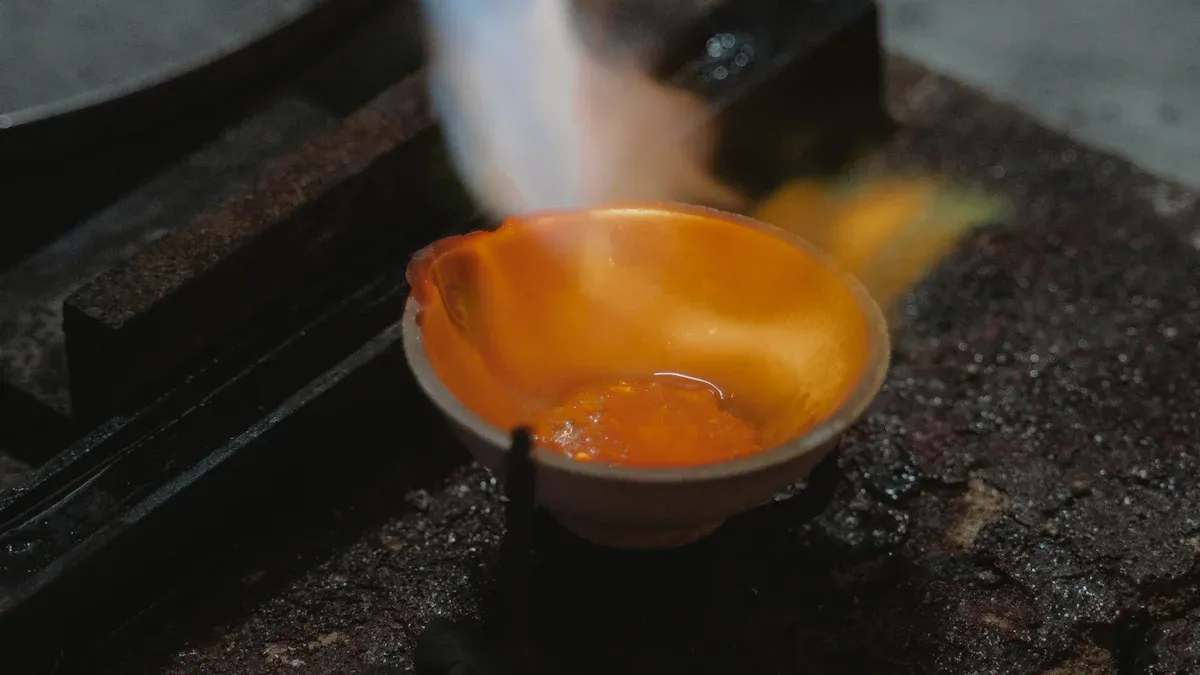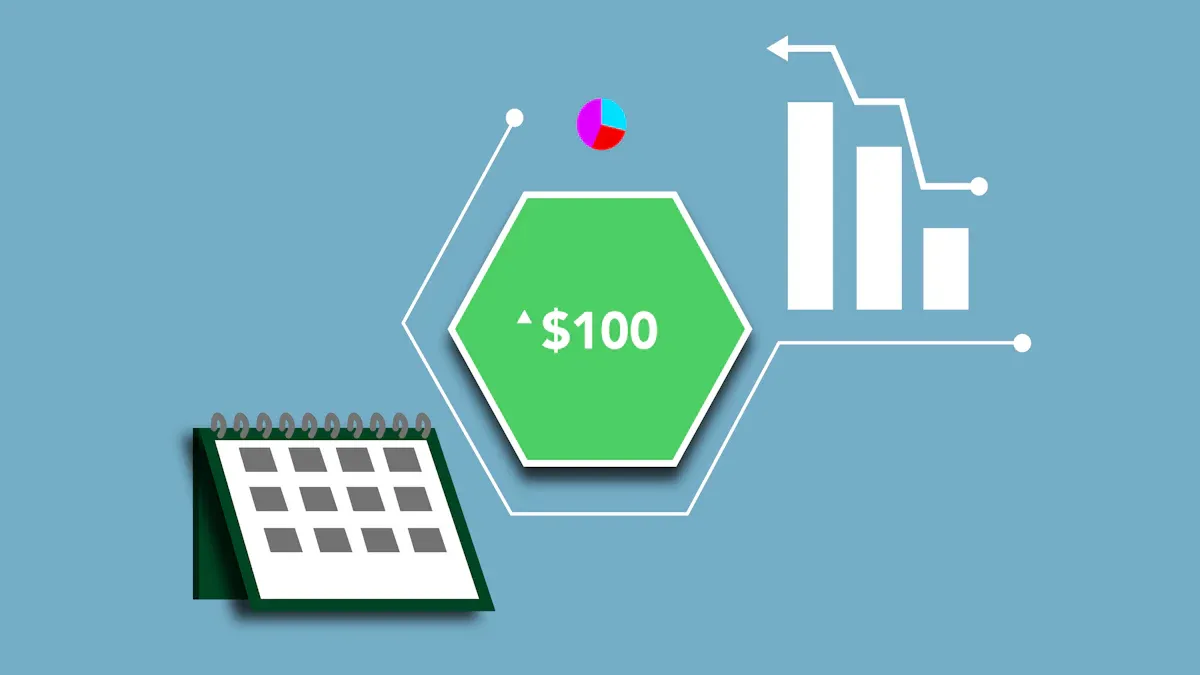
The global investment casting market is substantial, with estimates for 2025 ranging from USD 17.31 billion to USD 19.8452 billion. Understanding the primary factors driving investment casting cost is crucial for businesses. This insight helps them optimize their Products and maintain competitiveness. For more details, you can Contact Us or learn About Us.
Key Takeaways
- Many things affect the cost of investment casting. These include how complex the part design is, the type of metal used, and the tools needed.
- Higher production numbers can lower the cost for each part. This is because fixed costs are spread out over more items.
- Businesses can save money by designing parts smartly. They can also choose materials carefully and keep their tools in good shape.
Key Factors Driving Investment Casting Cost in 2025

Part Design Complexity and Dimensional Tolerances
The design of a part significantly influences its investment casting cost. Intricate geometries often demand specialized molding techniques, which increases production expenses. For example, designs with drastic changes in wall thickness can impede metal flow and solidification. This leads to castability issues and affects production rates. While manufacturers can add features to the mold to mitigate these problems, they increase tooling costs. Complex castings also frequently require more intricate gating and riser systems. These additions increase the product’s weight during casting, leading to higher labor and material costs until workers remove the excess.
Furthermore, features like pulls, cores, and inserts can reduce secondary machining and assembly costs by creating complex features or hollows directly in the casting. However, their implementation adds to the overall complexity and cost of the initial casting process. For instance, using collapsible cores offers the lowest piece price but comes with a higher tool cost. Soluble cores require an additional wax injection mold and more labor, resulting in a higher piece price.
Tighter dimensional tolerances almost always lead to higher investment casting costs. These increased costs stem from more expensive tooling, stricter process control, and additional post-casting operations. Achieving very fine tolerances, such as CT4 or CT5 grades, typically requires more precise tooling, stricter process control, and potential post-casting operations like straightening or machining. It is crucial to specify only functionally necessary precision to manage costs effectively. Avoiding ‘over-tolerancing’ parts, like demanding a CT4 grade when CT7 suffices, helps reduce expenses and improves production reliability.
Material Selection and Market Volatility
The metal alloy used significantly influences the investment casting cost. Different materials carry different price tags. For instance, carbon steel typically costs much less than stainless steel. Alloy steel pricing varies based on the specific metal type, such as aluminum, chromium, or nickel, and is subject to supply and demand. While stainless steel has a higher initial price than other alloys, its durability can lead to long-term economic benefits. Cast iron parts are considerably cheaper due to the lower cost of iron alloys.
Metal prices are determined by market forces, including supply and demand. Most casting projects use a combination of recycled scrap metal and alloying metals. Pricing can also vary based on the geographical region of purchase and industry trends. The initial cost of the metal is a major determinant in the final production estimate for any casting process.
Raw material price fluctuations pose a significant challenge for the investment casting materials market. This volatility directly impacts production costs and pricing strategies. For example, metal prices increased by 8% in 2024, and key material contract prices saw a 7% year-over-year increase. These fluctuations can constrain market expansion despite other growth drivers.
Tooling and Pattern Creation Investment
Tooling represents a significant upfront investment in investment casting. The cost of tooling can range from $1,000 for simpler projects to over $20,000 for more complex ones. Some specialized dies can even cost between $15,000 and $60,000. This initial investment includes the pattern die cost, which complexity, the number of cavities, material, and lifespan influence. It also covers design and engineering time, along with tooling maintenance and replacement.
The choice of tooling method also impacts costs. While collapsible cores might offer a lower piece price, they come with a higher tool cost. Loose inserts are generally not recommended except for very low-volume parts. Soluble cores require an additional wax injection mold and more labor, leading to a higher piece price. Pre-formed ceramic cores are expensive for specialized shapes and serve as a last resort.
Production Volume and Scale Economies
Higher production volumes significantly reduce the per-unit cost in investment casting. This happens primarily due to economies of scale. Manufacturers spread fixed costs, such as tooling, initial setup, design engineering, and programming, across a larger number of parts. This makes each individual part considerably cheaper. For instance, a single part from a batch of 10,000 will cost much less than one from a batch of 10.
Larger batches also improve setup and rework efficiency. The time and effort for equipment preparation and machine configuration are largely fixed, regardless of the quantity produced. In small runs, this setup cost is not adequately offset by a large number of parts. Furthermore, the impact of rework or scrap from defects is proportionally much higher in smaller batches, making larger volumes more cost-effective per unit. While the initial investment for tooling can be substantial, the per-unit cost decreases significantly when production runs are large.
Post-Casting Processes and Surface Finish Requirements
Processes after casting, such as machining and heat treatment, add significant costs. These costs depend on the complexity, precision, and energy consumption involved. Surface finish requirements also play a crucial role in the total cost of an investment cast part. Higher requirements, such as very low Ra values, increase costs due to more meticulous mold preparation, less aggressive cleaning, or specialized polishing.
Choosing a premium shell, which uses fine refractory and extra coats, can increase shell cost by 10–20%. However, it can reduce post-cast grinding and polishing by 30–50%. Conversely, a basic shell, with coarser refractory and fewer coats, cuts shell cost by 15% but drives up downstream machining costs if extensive rework is needed, ultimately raising the total part cost.
Investment casting excels at producing near-net-shape parts with good surface finishes. This often reduces the need for extensive secondary machining operations. Surfaces for mounting or sealing still require some metal removal, but it is less and faster than with other casting processes, also shortening manufacturing lead times. Investment cast surfaces generally take paint well with little preparation. Parts going for plating require less polishing compared to those produced by other casting processes. The ability to reproduce fine details like logos and identification markings directly into the casting avoids the cost of separate marking processes.
Evolving Influences on Investment Casting Cost
Raw Material Market Trends and Supply Chain Resilience
Raw material availability and price fluctuations directly impact manufacturing costs and profitability. Global supply chain dynamics, including disruptions and logistical challenges, can hinder timely delivery and production. Businesses often find it difficult to receive, produce, ship, and sell products when supply chains face issues. These disruptions primarily manifest as problems in manufacturing production and escalating transportation costs. They directly affect the overall cost and lead time of materials.
The global metal casting market is growing. Experts expect it to reach about $250 billion by 2025, with an annual growth rate of around 6.5%. This growth comes from increasing applications in sectors like automotive, aerospace, and construction. Industry demand is shifting toward lightweight and high-strength materials. This trend makes advancements in technologies like 3D printing and additive manufacturing more common. These digital technologies, including 3D printing and simulation software, can reduce material waste by up to 30% and improve production speeds.
Sustainability is also reshaping the metal casting landscape. Regulations are tightening around carbon emissions and waste management. Reports suggest that up to 30% of metal casting operations will use recycled materials by 2025. Regulatory pressures and consumer demand drive this change. The use of recycled materials in metal casting is projected to grow significantly, with an expected compound annual growth rate (CAGR) of 5.2%. This reflects a broader commitment to sustainable practices.
Energy Costs and Sustainability Mandates
Energy costs represent a significant and often volatile component of the overall investment casting cost. Rising electricity prices consistently trend upward. The U.S. Energy Information Administration (EIA) data shows this for industrial electricity. Forecasts suggest potential residential electricity rate increases of 15%–40% over the next five years. Industrial rates will likely follow due to increased demand. Natural gas prices also show volatility. While 2022 saw a surge, 2023 experienced a decline. The EIA projects natural gas costs for power generators to average around $3.37 per million British thermal units in 2025. This marks a 24% increase from 2024 and directly impacts electricity costs.
Increased demand from data centers, electrification of transportation, and reshoring of manufacturing stress grid infrastructure. This can lead to higher prices and reliability issues in regions like Virginia, Georgia, West Texas, and parts of the Midwest. Federal and state decarbonization policies also influence energy costs. They introduce compliance costs, even as some offer clean energy incentives. Global events and supply chain disruptions continue to affect energy markets. They impact fuel availability and equipment costs.
For foundries, including investment casting operations, these energy price fluctuations pose significant challenges. Even minor percentage increases in energy costs can translate into millions of dollars annually. This directly erodes profit margins and diminishes competitiveness. A study found that a 10% increase in the energy price differential between two countries leads to a 3.2% rise in cross-border acquisitions. This effect is especially pronounced in energy-intensive industries, which includes investment casting.
Sustainability mandates also influence production expenses. Companies must adopt practices that reduce their environmental footprint.
| Sustainable Practice | Impact on Production Expenses |
|---|---|
| Optimized Furnace Operations | Reduces energy consumption, lowers greenhouse gas emissions, extends equipment lifespan, leading to lower operating costs. |
| Near-Net-Shape Casting | Minimizes material scrap, decreases energy and labor for post-processing, resulting in a more cost-effective production workflow. |
| Closed-Loop Water and Chemical Systems | Reduces resource consumption, prevents pollution, minimizes environmental discharge, and ensures compliance, leading to lower operating costs. |
| Regulatory Compliance | Helps avoid fines and supports long-term operational sustainability by meeting environmental and emissions standards. |
| Cost Savings | Leads to lower production costs through reduced energy consumption, fewer raw materials, and minimized machining requirements. |
| Brand Reputation | Attracts eco-conscious clients and investors, enhancing competitive advantage and potentially increasing business. |
| Innovation Opportunities | Drives technological advancement and product differentiation, potentially leading to more efficient and cost-effective components. |
Labor Costs, Automation, and Cycle Time Efficiency
Labor costs remain a significant factor in manufacturing. However, automation is transforming investment casting by streamlining production and minimizing human error. Robotic arms and conveyor belts minimize pattern damage during movement. They also create more molds per minute, reducing lead times for high production runs. Robotic arms perform time-consuming wax pattern assembly tasks around the clock, ensuring consistent connections. Robots in shell-making processes ensure greater quality consistency and worker safety by evenly coating wax patterns. Robots can operate 24/7 without breaks, boosting productivity and further reducing lead times.
Automation eliminates manual intervention, significantly reducing labor expenses. Efficient material handling systems minimize waste through accurate pouring and trimming. Predictive maintenance in automated systems lowers repair costs and downtime, increasing profitability. The upfront costs for acquiring and installing automated systems, including robotic equipment and control systems, can be substantial. However, these initial investments are often justified by long-term gains in efficiency, reduced labor costs, and improved product quality.
Artificial intelligence (AI) and automation are transforming investment casting. AI-powered simulation tools optimize gating systems, predict shrinkage, and reduce costly trial-and-error. This improves dimensional accuracy and reduces cycle times. Automation technologies, such as robotic shell-building and machine learning-integrated inspection systems, enhance casting quality consistency and lower operational costs. Predictive maintenance, driven by AI, improves the uptime of furnaces and tooling infrastructure. These advancements are crucial for meeting the demand for lightweight, precision-engineered components in high-spec industries. They ensure quality assurance, repeatability, and scalability.
Quality Control and Inspection Technologies
Implementing strict quality control in investment casting eliminates rework and waste. This prevents production delays and higher costs associated with flawed parts. This dedication to quality assurance leads to increased efficiency and exceptional results. It avoids the need to revisit designs, recast, retest, and resend pieces.
Advanced technologies offer significant cost benefits. Predictive maintenance, for example, anticipates equipment failure. This enables planned maintenance and reduces costly unplanned downtime. AI can foresee potential defects in cast parts. This allows for early intervention and corrective actions to prevent expensive errors. Digital twin technology facilitates process optimization through simulating various scenarios, enhancing efficiency and quality. It also enables ongoing monitoring and improvement of the foundry process. Quality control measures significantly decrease defects and scrap. This minimizes waste materials and conserves valuable resources.
High-performance filters significantly reduce scrap rates and rework. They eliminate defects like inclusion scrap and voids. Manufacturers have reported yield improvements of 6-12% compared to foam filters. Potential increases can reach up to 20% for processes previously lacking filters. One client experienced transformative results after switching to Holy Filters. They observed:
- 12% Yield Improvements: Achieved through reduced defects and inclusion scrap, boosting overall efficiency.
- Cost Savings: Realized by eliminating the need for frequent rework, saving both time and resources.
Strategies to Optimize Investment Casting Cost

Design for Manufacturability (DFM) for Cost Reduction
Smart design choices significantly lower production expenses. DFM focuses on creating parts that are easy and efficient to manufacture. Investment casting reduces metal waste and energy costs by minimizing machining. It achieves near-net shapes and tight tolerances, replacing operations like milling and drilling. This leads to lower labor and metal costs, plus quicker turnaround times. Additive manufacturing for 3D printing patterns also helps produce complex, lightweight components, further cutting costs.
Strategic Material Sourcing and Alternative Alloys
Finding the right materials at the best price is crucial. Businesses should explore various suppliers and negotiate favorable terms. Sometimes, alternative alloys offer similar performance at a lower price. Staying informed about market trends helps secure materials efficiently.
Tooling Longevity and Maintenance Planning
Tooling represents a major upfront expense. Therefore, extending its lifespan is vital. Regular maintenance and proper care prevent premature wear. This proactive approach avoids costly repairs or replacements. It ensures consistent quality and reduces overall investment casting cost over time.
Volume-Based Production and Order Consolidation
Producing larger quantities often lowers the per-unit price. Fixed costs, like tooling, spread across more items. Consider consolidating orders to maximize these savings. For example, part consolidation, where one casting replaces an assembly of many components, saves money on assembly labor and inventory management. This often justifies the investment casting process.
Process Streamlining and Secondary Operation Minimization
Streamlining production processes and reducing extra steps saves time and money. Investment casting naturally minimizes secondary operations. Its superior surface finish often eliminates the need for additional machining or polishing. This speeds up production and lowers overall manufacturing costs. Design flexibility allows for complex, near-net-shape parts as a single piece, reducing extra machining or assembly. One aerospace client saw yield improvements of 6-12% by using high-performance filters, which cut scrap costs and boosted profitability. Automation and AI also make processes more efficient, reducing errors and improving quality.
Part design, material selection, and post-casting processes significantly influence investment casting cost. Businesses must manage these expenses proactively to maintain a competitive edge. The future demands smart strategies and adapting to new technologies for effective cost control.
FAQ
How can businesses lower investment casting costs?
Businesses can lower costs by designing parts for manufacturability, choosing materials wisely, maintaining tooling, consolidating orders, and streamlining processes. These actions help reduce overall expenses.
What is the biggest cost driver in investment casting?
Part design complexity, tight dimensional tolerances, and material selection often drive the highest costs. Post-casting processes and surface finish requirements also add significant expense.
Why do tight tolerances increase investment casting costs?
Tighter tolerances demand more precise tooling, stricter process control, and additional post-casting operations. This increases production expenses, so specify only necessary precision.
